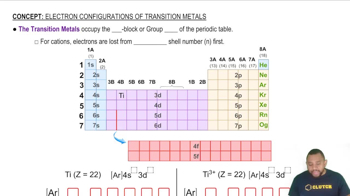Textbook Question
For each of the intermetallic compounds shown in Figure 12.17 determine the number of each type of atom in the unit cell. Do your answers correspond to the ratios expected from the empirical formulas: Ni3Al?
 Verified step by step guidance
Verified step by step guidance


What type of lattice—primitive cubic, body-centered cubic, or face-centered cubic—does each of the following structure types possess: (e) ZnS?
Silicon carbide, SiC, has the three-dimensional structure shown in the figure.
(b) Would you expect the bonding in SiC to be predominantly ionic, metallic, or covalent?
Energy bands are considered continuous due to the large number of closely spaced energy levels. The range of energy levels in a crystal of copper is approximately 1 × 10–19 J. Assuming equal spacing between levels, the spacing between energy levels may be approximated by dividing the range of energies by the number of atoms in the crystal. (b) Determine the average spacing in J between energy levels in the copper metal in part (a).